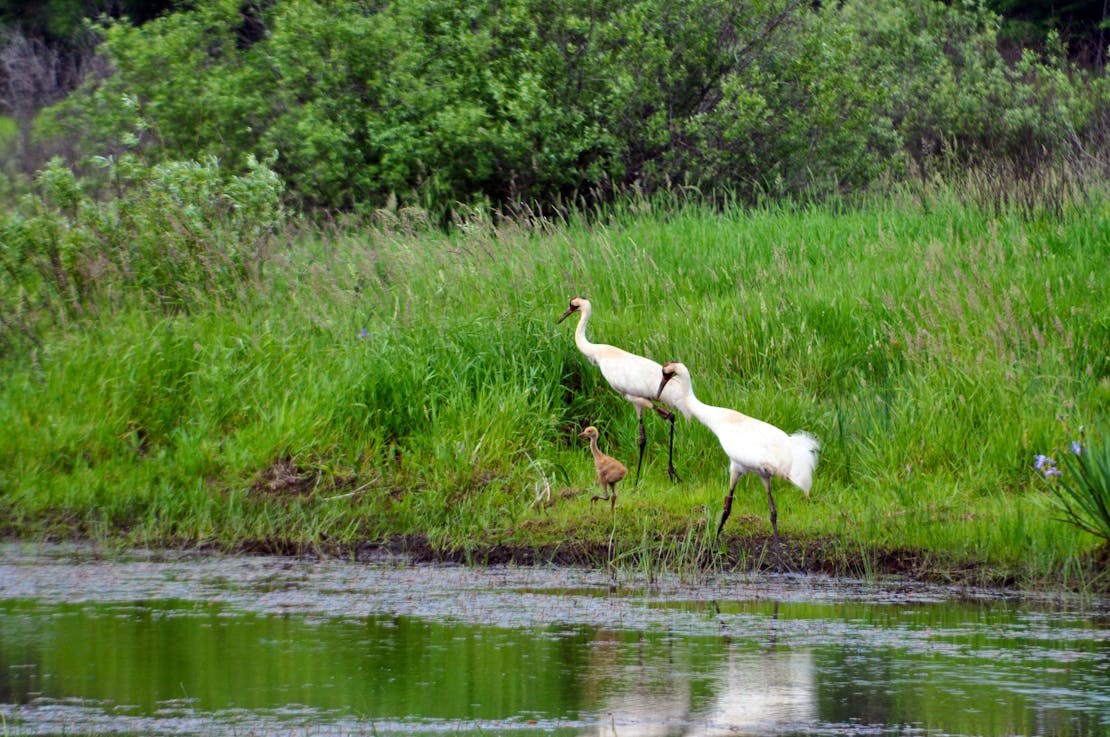Tweet“The law governing refuges is clear: wildlife comes first. This transmission line will create a collision risk for migratory birds and destroy the surrounding habitat, and if allowed to move forward, this project will set a troubling anti-conservation precedent.”
In a petition with more than 26,780 signatures, Defenders of Wildlife urged the U.S. Fish and Wildlife Service (FWS) to take swift action to protect the Upper Mississippi River National Wildlife and Fish Refuge from industrial threats.
In January, Defenders of Wildlife and other conservation groups won their case to stop the Cardinal-Hickory Creek Transmission Line Project from going forward. The District Court agreed with plaintiffs and found that the project is incompatible with the purposes of the refuge and therefore violates the National Wildlife Refuge System Improvement Act. However, FWS is still considering whether to allow industrial-scale, twenty-story electricity transmission towers to cut a destructive gash right through the refuge.
“The law governing refuges is clear: wildlife comes first. This transmission line will create a collision risk for migratory birds and destroy the surrounding habitat, and if allowed to move forward, this project will set a troubling anti-conservation precedent,” said Mike Senatore, vice president of Conservation Law with Defenders of Wildlife. “We urge the U.S. Fish and Wildlife Service to protect this refuge and accept the court’s ruling that this transmission line is not compatible with the purpose of the refuge.”
The petition sent to FWS Director Martha Williams and FWS Assistant Director for Endangered Species Gary Frazer, urges the Service not to appeal the district court decision, which would help ensure this area remains a safe haven for migratory birds.
Designated a Wetland of International Importance and a Globally Important Bird Area, the FWS is considering allowing the construction of a damaging industrial-scale 20-story high electricity transmission line through an unspoiled part of the refuge. Stretching 261 river miles from Minnesota to Illinois, the Upper Mississippi River National Wildlife and Fish Refuge has been a sanctuary for migratory birds, fish, wildlife, and people. Each year, hundreds of thousands of waterfowl and more than 290 species of birds migrate to this refuge and breed. The refuge protects more than 240,000 acres of the Mississippi River floodplain.
The National Wildlife Refuge System is the only system of public lands dedicated to the conservation of wildlife. Refuges protect America’s wildlife, fish and plants, ensuring these important habitats and the wildlife that depend on them are around for generations to come.
For over 75 years, Defenders of Wildlife has remained dedicated to protecting all native animals and plants in their natural communities. With a nationwide network of nearly 2.1 million members and supporters, Defenders of Wildlife is a leading advocate for innovative solutions to safeguard our wildlife for generations to come. To learn more, please visit https://defenders.org/newsroom or follow us on X @Defenders.
Media Contact
News

Hundreds of Thousands of Americans Oppose Trump Administration Effort to Roll Back Protections for Imperiled Animals and Plant Species


